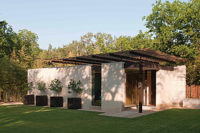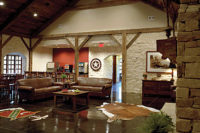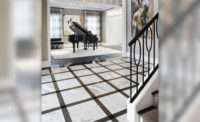Located in the heart of the business district in downtown Houston, TX, 609 Main is a 50-story Class A office building that is a 1,150,785-square-foot pre-registered LEED Platinum space, connected to a 633,782-square-foot parking garage. Camarata Masonry Systems, Ltd., also located in Houston, TX, was responsible for the shop drawings, engineering and installation of 16,500 square feet of honed Portuguese Moca Cream limestone interior wall cladding, 19,700 square feet of honed Aurisira limestone and honed Lasa marble flooring and stair trends and risers, and 780 square feet of stone “paintings” — comprised of Irish Green, Lapis Blue, Lasa Macchia Vecchia, Fusion Fire and Azul Macauba. An additional 250 square feet of antiqued Impala Black granite cladding for the fountain, 1,685 square feet of Dal-Tile Woven Wool solid surface material for the lavatory tops and 230 square feet of Caesarstone Pure White countertops and island were also installed. The stone was supplied and fabricated by Savema S.p.A. and quarried by Cava Romana.
“The stone paintings are what catches everyone’s eye,” said Scott Slimp, senior project manager for Camarata Masonry Systems. “There are five art projects and each lobby uses a different stone; one is the Irish Green, one the Lapis Blue, one the Lasa Macchia Vecchia, one the Fusion Fire and one the Azul Macauba.” For the “paintings,” the architect handpicked the slabs and coordinated the size of each — matching sizes with feathered mitered edges with epoxy returns. While some of the work was done with 3cm pieces, the majority was with 2cm. In order to get hairline joints, they used epoxy and a kerf anchor system.
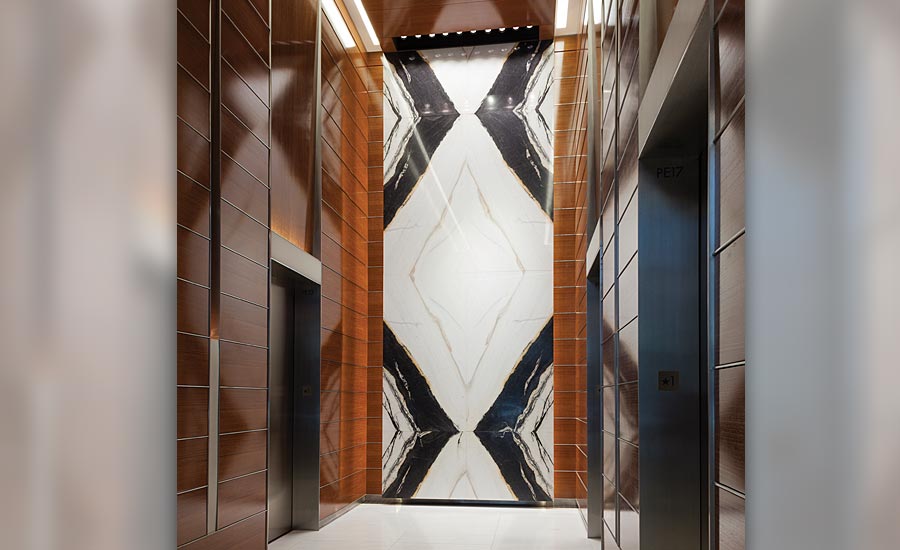
“Those paintings were one of the challenges,” said Slimp. “Other challenges included the jobsite itself. There was little storage. Scheduling got thrown off a little as the project grew so when it came to installation, we had to make up all the time.”
Another highlight of the project is the angles that were used. They are eye-catching from the glass exterior base to the crown of the tower and throughout the interior finishes. The 11-foot, 3-inch arrowhead spandrel of Moca Cream limestone towers 20 feet above the lobby floor — mirroring the transition of the Aurisira limestone and Lasa marble paving.
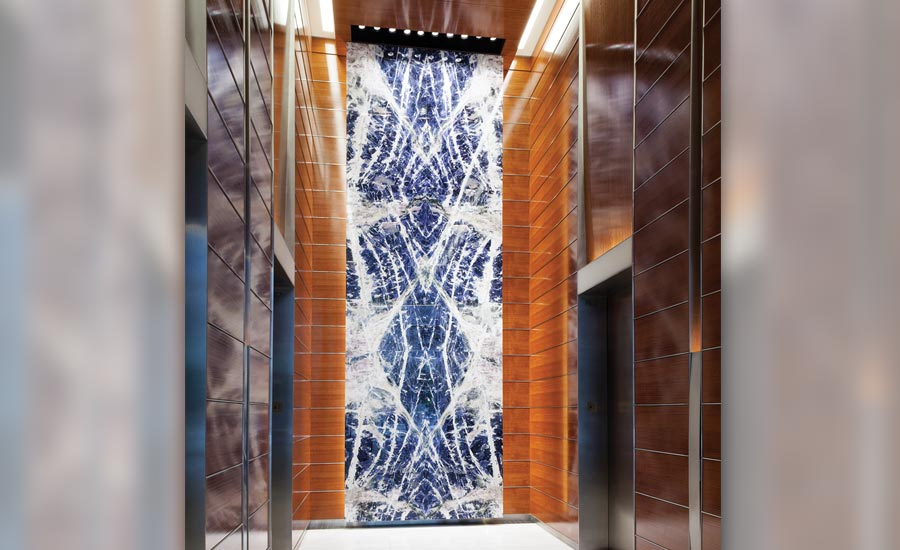
The sloping end condition of the 31-foot, 6-inch-tall Moca Cream wall, with its ¾-inch reveal at each course, had to tie in precisely with the sloping glass wall located around the corner. “The angles were strange on the project and had to be carried out to the fourth decimal,” said Slimp. “They are atypical angles. It mostly occurred in the ceiling, where the Moca Cream went above. That arrowhead tied into the floor — the floor transitioned along with the ceiling up above. Couple that with the sloping wall and the glass wall that was backlit. It was all pre-cut glass and had to be just right.
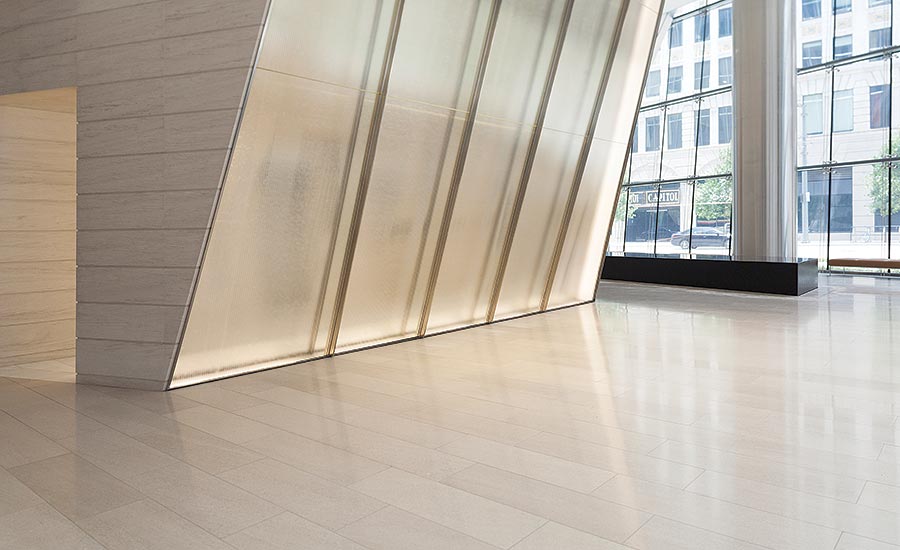
“What we did on our stone was we had a finished edge making the angle that was about 40 feet in height,” Slimp went on to say. “We oversized the pieces in length and then cut the finished edge on sight. Their angle on the glass had to match the angle on the stone, so we would be cutting a bit on each stone to tie into the glass.”
One other piece of interesting design to the building was the infinity edge fountain made out of Impala Black granite, featuring a mitered edge. “The infill of the fountain uses flat river rock, while the water just rushes over the edge of the fountain,” said Slimp. “The one issue we ran into with that fountain was that after the water ran down the sides and went into the trough the moisture was going up and getting the stone wet from the bottom up. So there had to be waterproofing placed there to stop that from happening.”
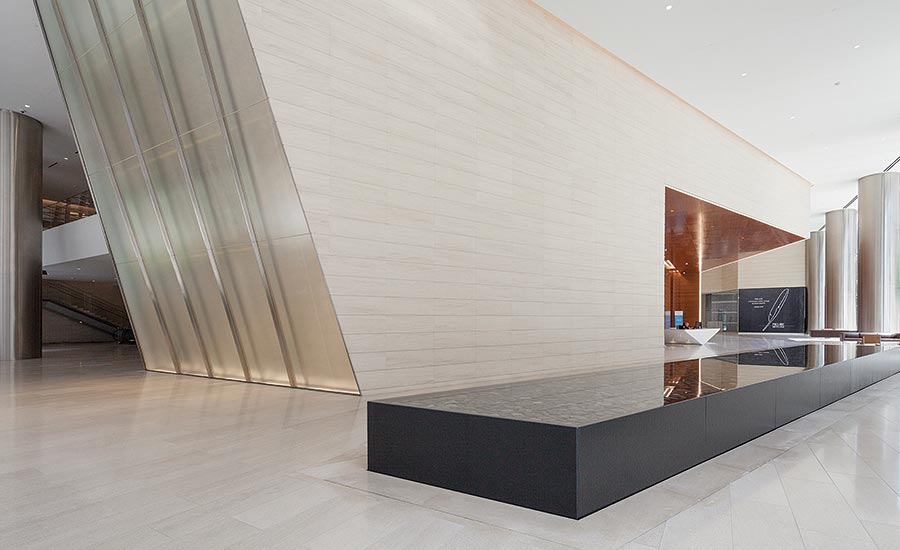
To also add to the complication of the project, all the stone was dry laid in Italy — establishing a specific single location for each of the 7,651 pieces of stone. The project’s congested downtown location necessitated detailed sequencing and just-in-time delivery of the material. In order to also meet with deadlines, two paving installation crews worked simultaneously to meet at the centerline of the revolving door on Main Street, reducing the installation time by approximately 20 days. The project took about eight months to finish and was the winner of a 2017 Pinnace Award of Excellence for Commercial Interior, which was given by the Natural Stone Institute.
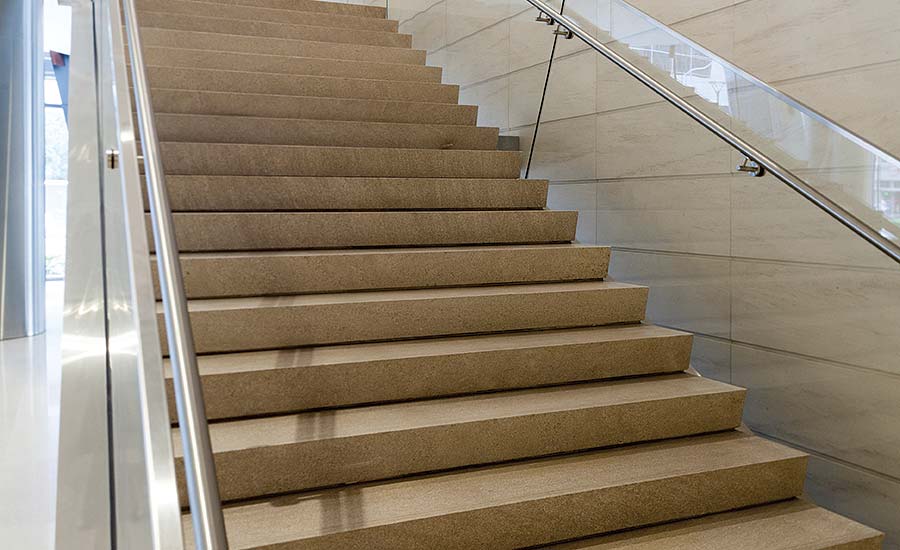
|
609 Main Houston, TXStone Installer: Camarata Masonry Systems, Ltd., Houston, TX Project Architect: Kendall/Heaton Associates, Inc., Houston, TX Stone Supplier/Fabricator: Savema S.p.A., Italy Quarrier: Cava Romana, Italy |


